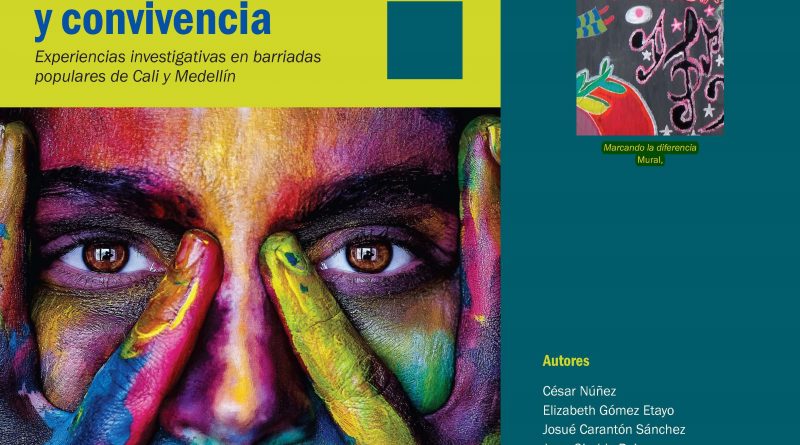Youth, Violence and Peace: Experiences from Cali and Medellín
TRANSCEND MEMBERS, 25 Oct 2021
Joám Evans Pim | Center for Global Nonkilling – TRANSCEND Media Service

3 Oct 2021 – Professor César Núñez (Universidad de Medellín, Colombia), a member of the Nonkilling Health Sciences Research Committee and Nonkilling Psychology Research Committee of the Center for Global Nonkilling, has jointly published with Elizabeth Gómez Etayo, Anyerson Gómez, Juan Giraldo-Rojas, Josué Carantón, Nora Vargas, Rodrigo Ocampo, Liliana Gallo and Ángela Arango, the book YOUTH, VIOLENCE AND PEACE, Investigative experiences in popular neighborhoods of Cali and Medellín. The text, originally in Spanish, is published by Sello Editorial de la Universidad de Medellín, and is the result of a joint research project with the Universidad Autónoma de Occidente (Cali) in Colombia.
The book can be downloaded for free here.
In line with the philosophy of the Center for Global Nonkilling, the book offers conceptual elements and categories of analysis to understand the incidence of different forms of violence in the construction of identities and daily realities of young people in Cali and Medellin in Colombia. It also offers a perspective of propositional analysis as an option to analyze and make young people visible as actors and authors of artistic, sports, cultural and political experiences and strategies for the construction of peace and peaceful coexistence in multiple scenarios. All of this is based on the hypothesis that young people are the last link in a chain of violence but not its cause.
The book is composed of two parts and 9 chapters containing a theoretical, conceptual and contextual reference. The first part refers to a general context of the problem of youth violence, the concept of youth and young people, restorative justice in young populations, and the concept of pro sociality, psychosocial skills and competencies. The second part shows different categories of analysis based on the experience of field work with very particular tendencies at the level of: corporealities and resistance to violence; the experience of the youth context and the demands and conflictive relationships with adult and institutional referents; gender and youth sexuality; coexistence and peace building, and finally a methodological section of the research process that gave rise to the book.
_____________________________________________

Joám Evans Pim is director of the Center for Global Nonkilling and a member of the TRANSCEND Network.
Go to Original – nonkilling.org
Tags:
Colombia,
Conflict Analysis,
Conflict Transformation,
Latin America Caribbean,
Literature,
Nonkilling,
Peace Education,
Peace Research,
Youth
Share this article:
email
mastodon
facebook
🔗 copy link
DISCLAIMER: The statements, views and opinions expressed in pieces republished here are solely those of the authors and do not necessarily represent those of TMS. In accordance with title 17 U.S.C. section 107, this material is distributed without profit to those who have expressed a prior interest in receiving the included information for research and educational purposes. TMS has no affiliation whatsoever with the originator of this article nor is TMS endorsed or sponsored by the originator. “GO TO ORIGINAL” links are provided as a convenience to our readers and allow for verification of authenticity. However, as originating pages are often updated by their originating host sites, the versions posted may not match the versions our readers view when clicking the “GO TO ORIGINAL” links. This site contains copyrighted material the use of which has not always been specifically authorized by the copyright owner. We are making such material available in our efforts to advance understanding of environmental, political, human rights, economic, democracy, scientific, and social justice issues, etc. We believe this constitutes a ‘fair use’ of any such copyrighted material as provided for in section 107 of the US Copyright Law. In accordance with Title 17 U.S.C. Section 107, the material on this site is distributed without profit to those who have expressed a prior interest in receiving the included information for research and educational purposes. For more information go to: http://www.law.cornell.edu/uscode/17/107.shtml. If you wish to use copyrighted material from this site for purposes of your own that go beyond ‘fair use’, you must obtain permission from the copyright owner.

